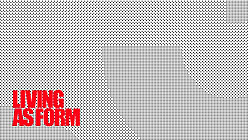This week, the non profit arts organization Creative Time is hosted their third annual Summit in downtown Manhattan. The Summit brought together all kinds of cultural producers — curators, writers, artists, and human rights advocates — to present and discuss how their work is engaged with the pressing social issues affecting our world today. The presenters range from well-known to unexpected, including: My Barbarian, Laurie Anderson, Alternate ROOTS, United Indian Health Services, Atlas, Claire Bishop, Teddy Cruz, Hou Hanru and Decolonizing Architecture. It’s a diverse group, to be sure; the Creative Time Summit is the only event I’m aware of that hosts such an elaborate, ambitious, and unprecedented collection of art practitioners.
Not surprisingly, two California College of the Arts affiliates, Ted Purves, the Chair of the MFA department, and Elyse Mallouk, a recent graduate of the MFA and MA in Visual and Critical Studies department (Mallouk currently lives in LA), attended the Summit, presenting Landfill, their joint project. I spoke to Mallouk to get a better sense of the Summit, and its international implications for socially minded art practice.
Carmen Winant:This is the Summit’s third year. Have you been to any others in the past? Can you discuss how the Summit was presented to you (did you apply, were you approached, etc.) and what you believe are the implications of such a critical gathering?
Elyse Mallouk: This is the first time I’ve attended the Creative Time Summit; it lasts only one day, but this year it was planned to coincide with an exhibition, called Living as Form, which opened the following day and lasts three weeks. The exhibition contains newly commissioned works installed at the Historic Essex Street Market and at other sites around the Lower East Side, shelves documenting past projects, and an archive that includes short descriptions and photographs of 366 works. As part of the exhibition programming, Ted and I presented Landfill — an online archive and quarterly subscription service we launched last February that chronicles socially engaged projects by documenting and redistributing the materials they generate (postcards, posters, newspapers, buttons, etc). We spoke about why we started the project and how it operates differently from other forms of documentation, and provided empty plastic bags and an issue of the Landfill Journal. We invited attendees to build an issue of the Quarterly by gathering ephemera from other projects on view at the site. Participants brought their collections back to an ephemera photo booth where we took “portraits” and printed them on postcards for collectors to keep and trade. Those photos will also be added to the Landfill archive.
This is the first time the Summit is being accompanied by an exhibition. Ted was one of the show’s curatorial advisors, and he was invited by Creative Time to speak and to present a project in the exhibition space.


